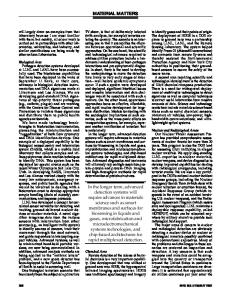Geospatial Technology and the Role of Location in Science
Globalisation has not led to the ‘death of geography’. Intensified relations between communities in different parts of the world have only highlighted the need for understanding and managing phenomena on a variety of geographic scales. From global warming
- PDF / 8,847,172 Bytes
- 322 Pages / 439.37 x 666.142 pts Page_size
- 96 Downloads / 388 Views
The GeoJournal Library Volume 96
Managing Editor:
Daniel Z. Sui, College Station, USA
Founding Series Editor:
Wolf Tietze, Helmstedt, Germany
Editorial Board:
Paul Claval, France Yehuda Gradus, Israel Sam Ock Park, South Korea Herman van der Wusten, The Netherlands
For further volumes: http://www.springer.com/series/6007
Henk J. Scholten · Rob van de Velde · Niels van Manen Editors
Geospatial Technology and the Role of Location in Science
123
Editors Prof. Henk J. Scholten VU University Amsterdam Fac. Economics & Business Admin. Dept. Spatial Economics De Boelelaan 1105 1081 HV Amsterdam The Netherlands [email protected]
Rob van de Velde, MSc Geonovum Barchman Wuytierslaan 10 3818 LH Amersfoort The Netherlands [email protected]
Niels van Manen, MA University of York Dept. History Heslington, York, YO10 5DD United Kingdom [email protected]
ISSN 0924-5499 ISBN 978-90-481-2619-4 e-ISBN 978-90-481-2620-0 DOI 10.1007/978-90-481-2620-0 Springer Dordrecht Heidelberg London New York Library of Congress Control Number: 2009927006 © Springer Science+Business Media B.V. 2009 No part of this work may be reproduced, stored in a retrieval system, or transmitted in any form or by any means, electronic, mechanical, photocopying, microfilming, recording or otherwise, without written permission from the Publisher, with the exception of any material supplied specifically for the purpose of being entered and executed on a computer system, for exclusive use by the purchaser of the work. Printed on acid-free paper Springer is part of Springer Science+Business Media (www.springer.com)
Foreword
Hundreds of thousands of creative and innovative efforts of users around the world provide evidence of the growing value of Geospatial Technology. Their work is saving resources, helping plan more livable communities, fostering economic development, improving human health and mitigating conflict: Geospatial Technology is creating more sustainable actions throughout the world. These efforts are part of the long history of the role of location in science. More than 200 years ago Alexander von Humboldt introduced the idea of geography as an integrative science; his holistic view considered the world as a series of interrelated and interdependent processes. Horticulturist and early landscape architect Warren Manning used map overlays as a way to integrate various physical and cultural geographic factors for site and regional planning. Ian McHarg popularized Humboldt’s and Manning’s ideas in his book Design with Nature (1969). Waldo Tobler, the first geographic information scientist, used quantitative methods, computer algorithms and software tools to analytically model geographic processes. In the 1960s Roger Tomlinson conceived and built the first geographic information system (GIS) in Canada. Carl Steinitz, an urban planner at Harvard University, pioneered many of the early ideas about the application of GIS for landscape analysis and urban planning. We stand on the shoulders of these pioneers. Today a new generation of
Data Loading...











